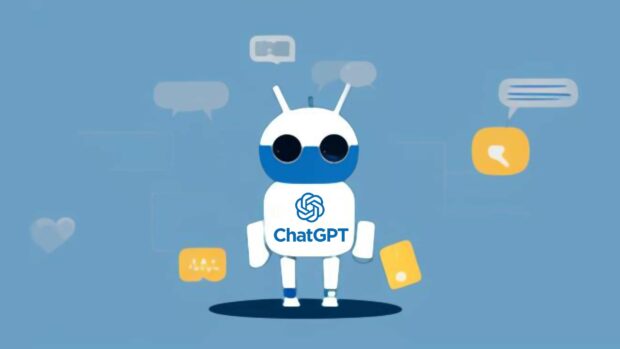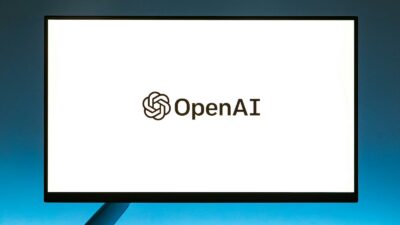Here’s how to upgrade yourself from being a casual ChatGPT user to a power user. Just use these tips to help you get the most out of your ChatGPT prompts.
Understanding ChatGPT and Its Potential

Before we dive into the specifics of using ChatGPT, let’s start by exploring what it is and what it can do.
What is ChatGPT?
Essentially, ChatGPT is an AI-powered language model capable of generating human-like text content by processing input prompts provided by the user. The AI has been extensively trained using a vast dataset of internet text. That means that it has access to a lot of information and can generate responses from various sources. Whether you’re looking to create content for your blog, church, or website, ChatGPT can help you generate high-quality content quickly and efficiently.
How ChatGPT Can Benefit You
So, why should you consider using ChatGPT for your content creation needs? Depending on your needs, there are a number of potential benefits:
- Time-saving: Using ChatGPT can help you generate high-quality content quickly and efficiently. This is particularly useful if you’re working to tight deadlines or have a large volume of content to produce.
- Consistency: Because ChatGPT is a machine, it’s not subject to the same biases or fluctuations in mood that human writers may be. This can help ensure greater consistency in the quality and tone of your content.
- Range and versatility: ChatGPT is capable of generating responses on a wide range of topics. This makes it a versatile tool that can be used across a variety of industries. Whether you’re looking to create blog posts, social media updates, or product descriptions, ChatGPT can help you quickly generate content that is engaging and informative.
- SEO: Another benefit of using ChatGPT is that it can help you to generate content that is optimized for search engines. By adding relevant keywords and phrases to your ChatGPT prompts, ChatGPT can generate content that can help boost your website’s visibility on search engine results pages.
Overall, ChatGPT is a powerful tool that can help you to create high-quality content quickly and efficiently. Whether you’re a content creator, marketer, or business owner, ChatGPT has the potential to transform the way you approach content creation and marketing.
Crafting Effective ChatGPT Prompts
Now that you understand the potential benefits of using ChatGPT, let’s move on to the specifics of how to create effective ChatGPT prompts that will help you get the most out of the tool.
The first few tips are more basic. Skip down the list to System Prompts, Temperature, and Max Tokes for more advanced tips.
Upgrade Your ChatGPT Prompts With These Smart Engineering Tricks #ChatGPT #ChatGPTtricks #ChatGPTtips Share on XBe Specific And Direct With Your Questions
Remember, ChatGPT is an artificial intelligence, not a person. When formulating your ChatGPT prompts, make sure to be as specific as possible. Clearly state what information or action you are seeking from ChatGPT. The more precise your prompt, the better chances you have of receiving a relevant and accurate response from the chatbot.
This means breaking down your requests into smaller, more targeted questions. For example, instead of asking a broad question like “What’s the best way to lose weight?”, try breaking it down. Ask more specific questions like “What are the most effective exercises for burning fat?” or “What foods should I eat to support weight loss?” By doing this, you can help ChatGPT better understand what you’re looking for and generate more relevant responses.
For example, if you are planning a birthday party, don’t ask ChatGPT this:
What's a pretty good thing to do for a birthday party?
Instead, ask ChatGPT something more like this:
Give me 10 birthday party activity ideas for a birthday party for a 5-year-old girl. The party will have 20 guests. Make at least 3 of the ideas involve unicorns. Include both indoor and outdoor activities in the list.
Being specific with your questions can also help you get more detailed and helpful responses. For example, if you’re asking about weight loss, ask a very specific weight loss question like “What are the best exercises for(Amazon link) burning belly fat?” This can lead to more detailed and targeted responses that are tailored to your specific needs.
Use Clear And Concise Language
ChatGPT performs best when given clear and straightforward queries. Try to avoid using jargon or overly complex or technical language that ChatGPT might not understand. Instead, try to phrase your questions in a way that’s easier for the AI to follow.
This will help ensure that the responses you get are accurate and relevant. By avoiding overly complex language, you can help ChatGPT better understand what you’re asking and generate more relevant responses.
Experimenting with Different Prompt Styles: As you become more comfortable using ChatGPT, you may want to start experimenting with different types of prompts to see what works best for you. Try experimenting with open-ended, closed-ended questions, and multiple choice questions.
Using Multiple Choice Questions
Another option is to experiment with multiple choice questions. By providing several different options for the AI to choose from, you can guide the direction of the response while still allowing for some flexibility for the AI.
Multiple choice questions can be particularly useful when you’re trying to narrow down a topic or get more specific information. For example, if you’re asking about the popularity of food recipes, you could provide several different options to choose from.
Which one of the following Super Bowl recipes will be more popular with teenage boys? Buffalo wings, Warm Spinach-Artichoke Dip, Sausage-Stuffed Fried Olives, or Spicy Cashew-Lemongrass Snack Mix?
However, it’s important to keep in mind that multiple choice questions can also be limiting, as they only allow for a finite number of responses. If you’re looking for more creative or unexpected answers, an open-ended question might be a better choice.
Open-Ended vs. Closed-Ended Questions
One way to change up your prompts is to vary between open-ended and closed-ended questions. Closed-ended questions have answers that are either “yes” or “no,” while open-ended questions allow for longer and more detailed answers. Depending on what you’re looking for, you may find that one or the other is more effective.
For example, if you’re trying to get a quick answer on a particular topic, a closed-ended question might be more appropriate.
Flat Earthers claim that the Earth is flat. Is the earth flat? Yes or no?
However, if you’re looking for more detailed information or trying to encourage a conversation, an open-ended question might be the way to go.
Take Advantage Of The Chat Format And Engage In Back-And-Forth
Unlike a search engine, you don’t have to “get it right” the first time with a chatbot. Instead of relying solely on a single prompt, consider engaging in a back-and-forth conversation with ChatGPT. You can build on the model’s previous responses, refer to them explicitly, or ask follow-up questions. This iterative approach enables a more interactive and dynamic interaction with the AI.
Since ChatGPT is a chatbot, you can interact with it in conversational form. This means you don’t have to repeat your previous ChatGPT prompts. The AI will use your previous interactions with it to help guide its new replies.
Setting The Scene With System Messages
When using ChatGPT, it is important to remember that the AI is working within a particular context. You can help guide the conversation by providing system messages.
For example, if you are using ChatGPT to simulate a conversation with a customer support representative, you could start the conversation with a system message like:
System: You are a customer support agent assisting a user with their technical issue.
This system message will help ChatGPT understand its role and prompt it to generate responses from the perspective of a customer support agent.
System messages can also be used to provide high-level instructions to guide the overall behavior of ChatGPT. For example, you could instruct the AI to adopt a specific personality or to respond in a particular style. These instructions will help shape the overall conversation and ensure consistent responses.
System messages are particularly useful for establishing a consistent tone, style, or persona for the AI’s responses. You can even instruct the AI to adopt a specific personality, such as:
System: You are a friendly and helpful assistant with a casual tone. Use a humorous personality in your responses.
This way, the generated responses will reflect the desired personality traits, creating a more engaging and coherent conversation. Experiment with different system messages to fine-tune the AI’s behavior and enhance the overall quality of the conversation.
Steal These Smart Engineering Tricks To Get The Most Out Of Your ChatGPT Prompts ... #ChatGPTtricks #ChatGPTtips #chatbot #AI Share on XGuiding The Conversation With Context
Providing context to ChatGPT can significantly improve the quality of the generated responses. Help the model understand the background, topic, or scenario by including relevant details in your prompt.
To do this, you can copy and paste a block of text or provide a URL with reference material. And you don’t have to do this at the beginning of your chat session. Even as the conversation progresses, it can be helpful to continue providing additional context through system messages. This might include reminding the AI of previous responses or providing additional information that can help guide the direction of the conversation.
For example, let’s say that ChatGPT has generated a response about the impact of climate change on polar bears. You might respond with a system message that says: “That’s an interesting point about polar bears. It’s worth noting that polar bears are just one example of the many species that are being impacted by climate change. In fact, scientists estimate that up to one million species could face extinction due to climate change in the coming decades.”
By providing this additional context, you’re helping ChatGPT understand the broader implications of the topic and guiding the conversation in a more informed direction.
Overall, utilizing system messages to provide context and guide the conversation can be an effective way to ensure that ChatGPT generates responses that are relevant, accurate, and informative.
Limiting Max Tokens
If you’re already an experienced ChatGPT user, then you’ve probably noticed how overly wordy it can be. ChatGPT generates very lengthy responses by default, so you may want to adjust the “max tokens” settings to get more concise and to-the-point answers.
ChatGPT measures tokens using a technique called wordpiece tokenization. Wordpiece tokenization is a process of breaking down words into smaller units. Wordpieces are typically between 1 and 4 characters long. For example, the word “hello” could be broken down into the following 3 wordpieces: he-ll-o.
The “max tokens” parameter adjusts the number of wordpieces in its response. By tweaking this setting, you can fine-tune the length of ChatGPT’s responses to better match your needs.
Here’s a max token experiment that you can try. Copy and paste this line into a ChatGPT prompt and see how it responds. Then try raising or lowering the number of tokens.
Describe a unicorn using only 30 tokensIf you prefer shorter answers, you can set the “max tokens” parameter to a lower value.
Here are some tips for adjusting the “max tokens” settings:
- Start with the default value of 2048 tokens. If you find that the responses are too long, you can decrease the value.
- Experiment with different values to see what works best for your writing style.
By adjusting the “max tokens” setting, you can better control the output of ChatGPT and ensure that you receive the responses that aren’t too long. Shorter answers are usually more concise and require less human editing.
”One Share on XUsing User Messages to Refine Responses
Another way to manage ChatGPT’s output is to use user messages to provide feedback and refine the responses you receive. If you feel like a particular response is off-target, for example, you might provide a follow-up message to clarify what you’re looking for. By doing this, you can help ensure that ChatGPT delivers content that meets your specific needs and requirements.
Proofread And Iterate
ChatGPT is a powerful tool, but it is definitely not perfect. Generated responses may occasionally (actually, almost always) contain inaccuracies or require further clarification. Sometimes the AI will just make things up. This is called an AI hallucination.
It’s a good idea to proofread any AI-generated text and refine your ChatGPT prompts if needed. By refining your prompts based on previous interactions, you can gradually improve the quality of the responses.
Experiment And Learn
ChatGPT is an evolving AI model, and understanding its strengths and limitations requires experimentation. Take the time to experiment with different prompts, parameters, and approaches. Through trial and error, you can discover effective strategies for generating the desired responses and refine your interactions with the AI.
Tips On Improving Your ChatGPT Prompts
So, there you have it – lots of tips to help you get the most out of your ChatGPT prompts. Anyone can use ChatGPT. But these smart engineering tricks will help you get much better results. By following these guidelines and experimenting with different approaches, you’ll get way more interesting results from AI tools like ChatGPT and Google Bard. Good luck!
How to Get Way More Interesting Results From ChatGPT By Using These Smart Engineering Tricks #ChatGPT #ChatGPTtips Share on X
Frank Wilson is a retired teacher with over 30 years of combined experience in the education, small business technology, and real estate business. He now blogs as a hobby and spends most days tinkering with old computers. Wilson is passionate about tech, enjoys fishing, and loves drinking beer.















 10 Reasons Why 2001: A Space Odyssey Is The Most Important Sci-Fi Movie Ever Made
10 Reasons Why 2001: A Space Odyssey Is The Most Important Sci-Fi Movie Ever Made
Leave a Reply
You must be logged in to post a comment.